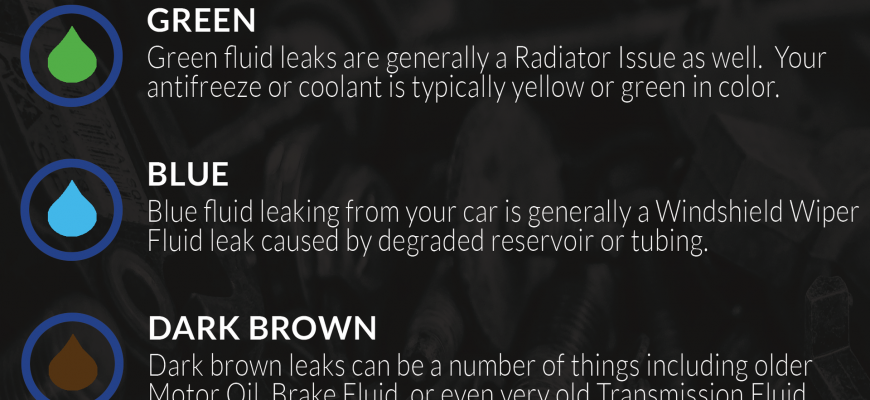When it comes to vehicle maintenance, one of the most overlooked yet crucial components is the brake fluid. Though often hidden away in the depths of your car’s engine bay, its condition can reveal a lot about the health of your vehicle. In this article, we’ll dive into the importance of brake fluid, what its color indicates, and how you can ensure your vehicle remains in optimal condition.
- What is Brake Fluid?
- The Significance of Brake Fluid Color
- 1. Clear or Light Amber
- 2. Dark Amber or Brown
- 3. Black
- 4. Cloudy or Milky
- Why Regular Maintenance is Essential
- How to Check Your Brake Fluid
- Beyond Color: The Importance of Consistency and Clarity
- Common Causes of Brake Fluid Contamination
- When to Replace Your Brake Fluid
- DIY vs. Professional Maintenance
What is Brake Fluid?
Brake fluid is a hydraulic fluid used in the braking system of vehicles. Its primary function is to transfer force from the brake pedal to the brake components, allowing for effective stopping power. This fluid operates under high pressure and is designed to withstand a wide range of temperatures. However, it’s essential to monitor its condition regularly as it directly impacts your vehicle’s braking performance.
The Significance of Brake Fluid Color
Brake fluid is typically a clear to light amber color when it’s new. However, its color can change over time due to moisture absorption, contamination, and the breakdown of the fluid itself. Understanding what these color changes mean can help you take proactive measures in maintaining your vehicle.
1. Clear or Light Amber
If your brake fluid is clear or light amber, you’re in good shape. This color indicates that the brake fluid is clean and has not been contaminated. Regular checks and timely fluid changes are recommended to keep it in this optimal state.
2. Dark Amber or Brown
When brake fluid begins to turn a darker amber or even brown, it’s a warning sign. This change in color typically indicates that the fluid is aging and has started to break down. It may also suggest that moisture has entered the system, which can lead to reduced braking efficiency and potential corrosion of brake components.
3. Black
Black brake fluid is a clear indication of contamination and severe degradation. This could be due to the presence of dirt, debris, or even the wear of brake components. If you notice black fluid, it’s imperative to have it replaced as soon as possible to avoid compromising your vehicle’s braking system.
4. Cloudy or Milky
If your brake fluid appears cloudy or milky, this is often a sign of significant moisture contamination. Moisture can cause the brake fluid to lose its effectiveness and can lead to brake failure. In this case, it’s crucial to flush the system and replace the fluid immediately.
Why Regular Maintenance is Essential
Brake fluid should be inspected regularly, as part of routine vehicle maintenance. Many manufacturers recommend flushing the brake fluid every 1-2 years, depending on driving conditions and the type of brake fluid used; By staying vigilant about the condition of your brake fluid, you can help ensure the longevity of your braking system and the safety of your vehicle.
How to Check Your Brake Fluid
Checking your brake fluid is a simple process that can be done at home:
- Locate the Brake Fluid Reservoir: This is usually found near the back of the engine bay, near the driver’s side.
- Inspect the Fluid Level: The reservoir typically has markings indicating the minimum and maximum levels. Ensure the fluid is between these levels.
- Observe the Color: Use the above guidelines to determine the condition of the brake fluid based on its color.
Understanding the color of your brake fluid is vital for maintaining the health of your vehicle. Regular checks can help prevent costly repairs and ensure your safety on the road. If you notice any adverse changes in color or consistency, it’s time to consult a professional mechanic. Prioritizing brake fluid maintenance is not just about preserving your vehicle’s performance; it’s about keeping you and your passengers safe.
So, the next time you pop the hood, take a moment to check your brake fluid. You’ll be glad you did!
Beyond Color: The Importance of Consistency and Clarity
While color is a crucial indicator of brake fluid health, consistency and clarity are equally important. New brake fluid should be smooth and free of particulates. If you notice any sediment, debris, or a gritty texture, it may indicate that the fluid has absorbed contaminants or that the brake components are degrading. These issues can lead to a compromised braking system, increasing the risk of accidents. Therefore, when evaluating brake fluid, engage your senses—observe the clarity, feel the consistency, and trust your instincts.
Common Causes of Brake Fluid Contamination
Understanding how brake fluid becomes contaminated can help you take preventive measures. Here are some common culprits:
- Moisture Absorption: Brake fluid is hygroscopic, meaning it absorbs moisture from the air; Over time, this can lead to a lower boiling point, increasing the risk of brake fade during heavy use.
- Debris and Dirt: If the brake system is not sealed correctly, dirt and debris can enter the system, leading to contamination. Regular maintenance can help prevent these issues.
- Oxidation: Brake fluid can oxidize when exposed to high temperatures, resulting in chemical breakdown. This process can produce sludge that hampers braking performance.
When to Replace Your Brake Fluid
Timing is everything when it comes to brake fluid maintenance. If you notice any of the aforementioned color changes or inconsistencies, it’s time to replace the fluid. Additionally, if your vehicle manufacturer recommends a specific interval for fluid replacement—often found in the owner’s manual—adhere to this guideline. Regularly flushing and replacing your brake fluid can prolong the life of your braking system and enhance safety.
DIY vs. Professional Maintenance
While checking your brake fluid is a straightforward DIY task, replacing it often requires specialized knowledge and tools. If you’re comfortable with basic vehicle maintenance and have the necessary equipment, you may choose to perform a brake fluid flush yourself. However, for most drivers, consulting a professional mechanic is the best route. They can ensure that the entire braking system is inspected, including the master cylinder, calipers, and brake lines, providing a comprehensive view of your vehicle’s health.
In the complex world of automotive maintenance, brake fluid might seem like a small detail, but its health is vital for safe driving. By understanding the color and consistency of your brake fluid, you can take proactive steps to ensure your vehicle remains safe and reliable. Remember, a simple check of your brake fluid can be the difference between a routine drive and an unexpected emergency. So take a moment, pop the hood, and give your brake fluid the attention it deserves. Your vehicle—and your safety—will thank you.
As you navigate the road ahead, stay informed, stay safe, and keep your vehicle in top-notch condition. After all, a well-maintained car is not just a mode of transportation; it’s a promise of reliability and peace of mind.










Great insights on brake fluid! I appreciate the detailed explanation about its significance and what to look for. Very useful information for car owners!
Excellent article! The breakdown of different colors of brake fluid was particularly enlightening. It’s crucial knowledge for any driver, thank you for sharing!
This article does a fantastic job of explaining the importance of brake fluid! I never realized how much it affects my vehicle
I learned so much about brake fluid from this article! The color indicators are super helpful. I’ll definitely be checking mine more often now.
I never thought about brake fluid until now. This article has opened my eyes to its importance in vehicle maintenance. Well written and very informative!